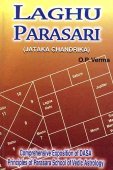Kendra, Kēndra, Kemdra: 15 definitions
Introduction:
Kendra means something in Hinduism, Sanskrit, the history of ancient India, Marathi, Hindi. If you want to know the exact meaning, history, etymology or English translation of this term then check out the descriptions on this page. Add your comment or reference to a book if you want to contribute to this summary article.
Images (photo gallery)
In Hinduism
Jyotisha (astronomy and astrology)
Source: Wikibooks (hi): Sanskrit Technical TermsKendra (केन्द्र).—1. Anomaly. The kendra is of two kinds, mandakendra and śīghrakendra. The mandakendra of a planet is equal to the 'longitude of the planet minus the longitude of the planet's mandocca i.e., the planet's apogee', where as the śīghrakendra of a planet is equal to the longitude of the planet's śīghrocca i.e., the apex of fastest motion, minus the longitude of the planet. 2. Centre. Note: Kendra is a Sanskrit technical term used in ancient Indian sciences such as Astronomy, Mathematics and Geometry.

Jyotisha (ज्योतिष, jyotiṣa or jyotish) refers to ‘astronomy’ or “Vedic astrology” and represents the fifth of the six Vedangas (additional sciences to be studied along with the Vedas). Jyotisha concerns itself with the study and prediction of the movements of celestial bodies, in order to calculate the auspicious time for rituals and ceremonies.
Ganitashastra (Mathematics and Algebra)
Source: archive.org: Hindu MathematicsKendra (केन्द्र) represents the number 4 (four) in the “word-numeral system” (bhūtasaṃkhyā), which was used in Sanskrit texts dealing with astronomy, mathematics, metrics, as well as in the dates of inscriptions and manuscripts in ancient Indian literature.—A system of expressing numbers by means of words arranged as in the place-value notation was developed and perfected in India in the early centuries of the Christian era. In this system the numerals [e.g., 4—kendra] are expressed by names of things, beings or concepts, which, naturally or in accordance with the teaching of the Śāstras, connote numbers.

Ganitashastra (शिल्पशास्त्र, gaṇitaśāstra) refers to the ancient Indian science of mathematics, algebra, number theory, arithmetic, etc. Closely allied with astronomy, both were commonly taught and studied in universities, even since the 1st millennium BCE. Ganita-shastra also includes ritualistic math-books such as the Shulba-sutras.
India history and geography
Source: Cologne Digital Sanskrit Dictionaries: Indian Epigraphical GlossaryKendra.—(IE 7-1-2), ‘four’. (CII 3), anomaly of the moon, taken to be her distance from apogee, from which point it is always reckoned by Hindu astronomers; the annual variation in the moon's kendra is 3 signs 2 degrees and 6.2 minutes, or 7 tithis 9 ghaṭīs and 42 palas. See also nīcocca-māsa, tithi-kendra, tithi-madhyama-kendra and tithi-spaṣṭa-kendra. Note: kendra is defined in the “Indian epigraphical glossary” as it can be found on ancient inscriptions commonly written in Sanskrit, Prakrit or Dravidian languages.

The history of India traces the identification of countries, villages, towns and other regions of India, as well as mythology, zoology, royal dynasties, rulers, tribes, local festivities and traditions and regional languages. Ancient India enjoyed religious freedom and encourages the path of Dharma, a concept common to Buddhism, Hinduism, and Jainism.
Languages of India and abroad
Marathi-English dictionary
Source: DDSA: The Molesworth Marathi and English Dictionarykēndra (केंद्र).—n (S) The centre of a circle, focus. 2 The argument of an equation. 3 The distance of a planet from the first point of its orbit in the fourth, seventh, or tenth degree. See patanakēndra, dvitīyakēndra, śīghrakēndra, mandakēndra.
Source: DDSA: The Aryabhusan school dictionary, Marathi-Englishkēndra (केंद्र).—n Focus, the centre.
Marathi is an Indo-European language having over 70 million native speakers people in (predominantly) Maharashtra India. Marathi, like many other Indo-Aryan languages, evolved from early forms of Prakrit, which itself is a subset of Sanskrit, one of the most ancient languages of the world.
Sanskrit dictionary
Source: DDSA: The practical Sanskrit-English dictionaryKendra (केन्द्र).—
1) The centre of a circle.
2) The argument of a circle.
3) The argument of an equation.
4) Distance of a planet from the first point of its orbit in the 4th, 7th or 1th degree.
5) The first, fourth, seventh and tenth lunar mansion.
Derivable forms: kendram (केन्द्रम्).
Source: Cologne Digital Sanskrit Dictionaries: Shabda-Sagara Sanskrit-English DictionaryKendra (केन्द्र).—n.
(-ndraṃ) 1. The centre of a circle. 2. The argument of an equation. 3. The distance of a planet from the first point of its orbit in the fourth, seventh, or tenth degree. (In astronomy.) It is variously applied in combination, as patanakendraṃ argument of the latitude; dvitīyakendraṃ the distance of the higher apsis from a planet in any point of its orbit; śīghrakendraṃ commutation, the distance of the sun from a superior planet or of an inferior planet from the sun; mandakendraṃ argument of anomaly.
Source: Cologne Digital Sanskrit Dictionaries: Cappeller Sanskrit-English DictionaryKendra (केन्द्र).—[neuter] the centre of a circle.
Source: Cologne Digital Sanskrit Dictionaries: Monier-Williams Sanskrit-English Dictionary1) Kendra (केन्द्र):—n. (borrowed [from] [Greek] κέντρον), the centre of a circle
2) the equation of the centre
3) the argument of a circle
4) the argument of an equation, [Horace H. Wilson]
5) the distance of a planet from the first point of its orbit in the fourth, seventh, or tenth degree, [Sūryasiddhānta] etc.
6) the first, fourth, seventh, and tenth lunar mansion, [Varāha-mihira’s Bṛhat-saṃhitā; Varāha-mihira’s Bṛhajjātaka] (cf. dvitīya-k, patana-k, manda-k, śīghra-k.)
Source: Cologne Digital Sanskrit Dictionaries: Yates Sanskrit-English DictionaryKendra (केन्द्र):—(ndraṃ) 1. m. Centre of a circle; the argument of an equation; the distance of a planet from the first point of its orbit.
Source: DDSA: Paia-sadda-mahannavo; a comprehensive Prakrit Hindi dictionary (S)Kendra (केन्द्र) in the Sanskrit language is related to the Prakrit word: Kiṃdiya.
[Sanskrit to German]
Sanskrit, also spelled संस्कृतम् (saṃskṛtam), is an ancient language of India commonly seen as the grandmother of the Indo-European language family (even English!). Closely allied with Prakrit and Pali, Sanskrit is more exhaustive in both grammar and terms and has the most extensive collection of literature in the world, greatly surpassing its sister-languages Greek and Latin.
Hindi dictionary
Source: DDSA: A practical Hindi-English dictionaryKendra in Hindi refers in English to:—(nm) (the) centre; ~[gami] centripetal, directed towards the centre; ~[stha] centrally located, central; [kemdrapasari] centrifugal; [kemdrabhimukha/kemdrabhisari] centripetal..—kendra (केंद्र) is alternatively transliterated as Keṃdra.
...
Kannada-English dictionary
Source: Alar: Kannada-English corpusKēṃdra (ಕೇಂದ್ರ):—
1) [noun] a point equally distant from all points on the circumference of a circle or surface of a sphere; the centre of a circle.
2) [noun] the point around which anything revolves; pivot.
3) [noun] a) a place at or building in which an activity or complex of activities is carried on or forming a central point in a district, city, etc. or a main area for an activity; b) a place from which ideas, influences, etc. emanate; c) a place to which many people are attracted.
4) [noun] the approximate middle point, place or part of anything.
5) [noun] a main store or warehouse.
6) [noun] in a federal system of government or union of states, the government having common authority or administration power over all the states; the central government.
7) [noun] (astrol.) in the astrological diagram, the first or any of the fourth, seventh or tenth houses.
Kannada is a Dravidian language (as opposed to the Indo-European language family) mainly spoken in the southwestern region of India.
See also (Relevant definitions)
Starts with: Kemdrabhigami, Kemdrabimdu, Kemdrapasarana, Kemdrasarakara, Kemdrastha, Kemdratiga, Kemdravanata, Kemdravyakti, Kendrabhimukh, Kendrabhimukha, Kendracyuti, Kendrak, Kendraka, Kendramandala, Kendranilanarayana, Kendrapagami, Kendraparamna Mukha, Kendraparanmukha, Kendravritta.
Ends with (+53): Abhikemdra, Adhikemdra, Amtahkemdra, Anusandhana-kendra, Arogyakemdra, Banulikemdra, Bharakendra, Bhartikendra, Bhramana-kendra, Bhucamp-janan-kendra, Bhukampa-janana-kendra, Calakendra, Chalakendra, Drakkendra, Dvitiyakendra, Gurutvakemdra, Hritkendra, Janakalyanakendra, Janakalyankendra, Kalakendra.
Full-text (+13): Panaphara, Shighrakendra, Drakkendra, Shravanika-kendra, Matrishishu-kalyana-kendra, Shravanik-kendra, Prashikshana-kendra, Patanakendra, Prashikshan-kendra, Bhucamp-janan-kendra, Sainik-swasthya-kendra, Tithi-kendra, Kendraka, Bili kendra kanigale, Kimdiya, Tithi-spashta-kendra, Lokendra, Cikkirakentiram, Iravikentiram, Kemdra.
Relevant text
Search found 19 books and stories containing Kendra, Kemdra, Kēṃdra, Kēndra; (plurals include: Kendras, Kemdras, Kēṃdras, Kēndras). You can also click to the full overview containing English textual excerpts. Below are direct links for the most relevant articles:
Brihat Samhita (by N. Chidambaram Iyer)
Chapter 98 - On the constellations (nakṣatra-karmaguṇa)
Chapter 60 - Installation of Idols in Temples (pratimā-pratiṣṭhāpana)
Chapter 69 - Signs of the five great men (pañca-puruṣa or pañca-mahāpuruṣa)
Eknath Ranade: The Man and his Mission < [October – December, 1982]
Bhavaraju Narasimha Rao Honoured < [January – March, 1987]
Swamy Parmarthananda < [January – March, 2006]
Chaitanya Bhagavata (by Bhumipati Dāsa)
Verse 1.11.1 < [Chapter 11 - Meeting with Śrī Īśvara Purī]
Significance of the Moon in Ancient Civilizations (by Radhakrishnan. P)
8. Poetess Smt. Nalapat Balamani Amma < [Chapter 14 - Case Studies of Natal Chart]
Jain Science and Spirituality (by Medhavi Jain)
2.1. Mind And Body (Introduction) < [Chapter 6 - Spirituality in Jainism]
The Matsya Purana (critical study) (by Kushal Kalita)
Related products


